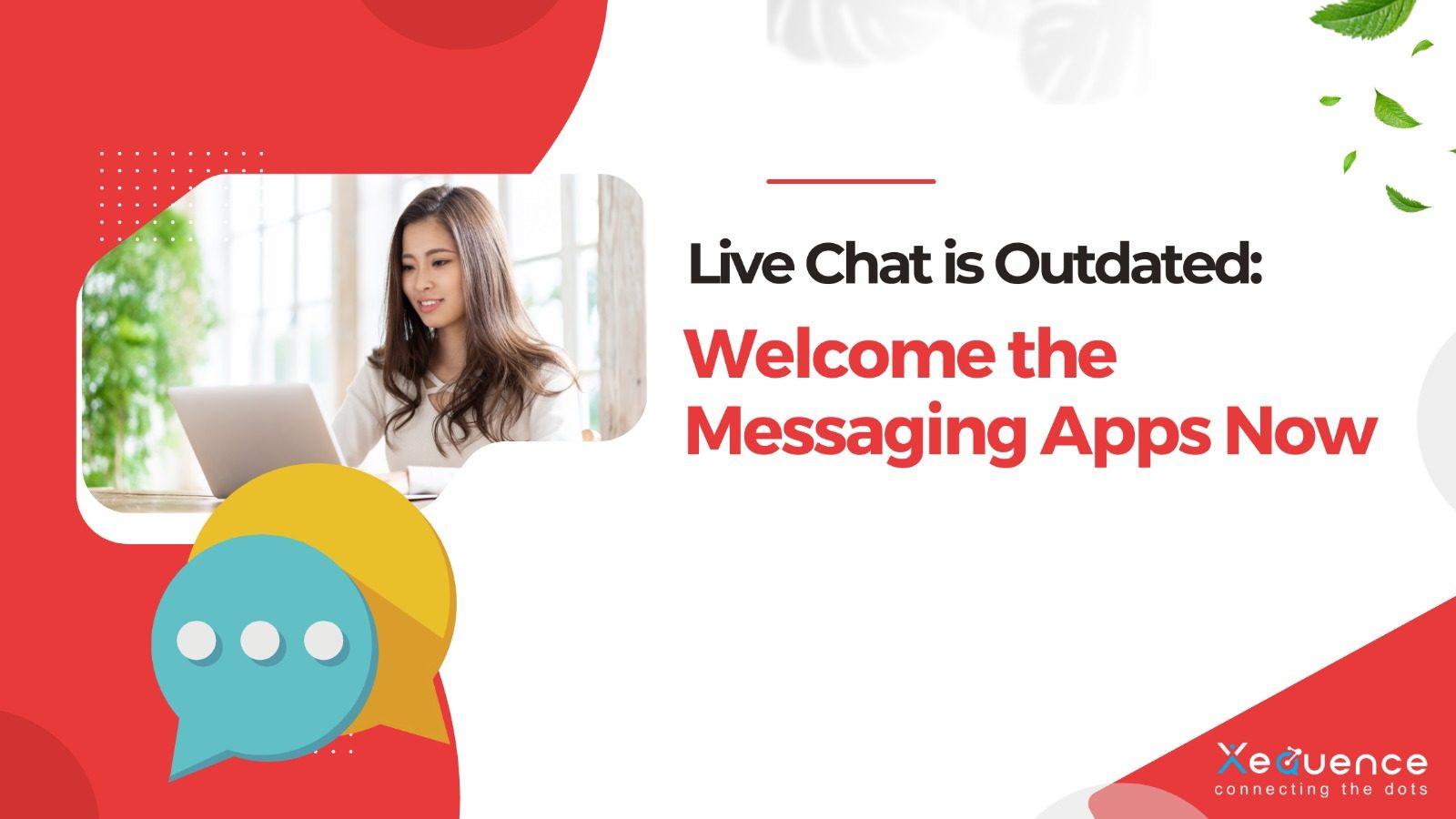
Live Chat is dead. Say hello to Messaging Apps
Live chat is outdated and it is the best time to welcome the messaging apps now. Traditional live chat, once a customer service mainstay, is being eclipsed by the more versatile and integrated capabilities of messaging apps. These platforms align with users daily digital routines, offering a more personalized and dynamic communication experience. Messaging apps support real-time, informal conversations and include advanced features like multimedia sharing, automation, and deeper tool integration. This shift marks a significant advancement in customer engagement and redefines the future of digital interaction, the base of customer retention.
What is live chat?
Live chat is a messaging tool that enables real-time communication between customers and businesses online. Essentially, it revolves around being “online” and “real-time.” You are likely familiar with live chat support from resolving delivery issues, requesting refunds, or reporting bugs. However, limiting live chat to just customer service will miss its broader potential. Modern live chat systems are versatile, offering proactive customer engagement, relevant self-service article suggestions, lead generation, and more. With this basic understanding, let’s move on to how to install and use live chat effectively.
What is messaging app?
Applications for text, phone, or video chat created specifically for messaging users allow for real-time communication. Message applications mainly run on desktop and mobile computers, in contrast to traditional live chat systems, which frequently work through web interfaces and customer care platforms. Quick messaging, file sharing, audio and video chats, and occasionally even interaction with other applications and services they provide for customer satisfaction.
Message apps that are widely used include WeChat, Facebook Messenger, WhatsApp, Telegram, and Signal. Easy-to-use interfaces, group chat functionality, and frequently improved privacy features define these applications. As a result, connecting with people has grown easier and more flexible. They are now essential to both personal and professional communication.
Does live chat have any limitation?
With live chat, businesses may be faced with an excessive volume of live chat session on a website that receives thousands of views every day. As a matter of fact, the average response time for live chat is about three minutes, and 21% of conversations end in silence.
It’s impossible to imagine that visitors these days are expecting a “live” or “immediate” response after waiting for three minutes. Changing that expectation is the key at this point. These can be achieved with instant messaging options, but let’s first discuss some of the drawbacks of live chat before moving on.
It is hard tomeet this expectation
Failure to meet this expectation of very instantaneous responses will result in unsatisfied users. People just turn off live chat, that’s what happens. When a website is too busy answering other discussions, it usually immediately turns off its live chat feature. If live chat isn’t being used, what good is it? What therefore should be the destination for your customers?
Chats Don’t Stick Around
Most live chat systems have limitations: customers can’t browse the website while chatting, and if they navigate away or leave, the conversation often disappears. With distractions and short attention spans, customers might not return, leaving issues unresolved and potentially losing them. Additionally, if a chat ends abruptly, any record of the conversation usually ends too. Email copies of chats are often inadequate for continued engagement or building loyalty, serving only as a backup if problems arise.
It is Impersonal
Despite the service’s “live” moniker, clients rarely feel as though they are speaking with a real person on the other end because of scripts and templates. Responses frequently don’t feel appropriate for the subject or problem at hand and come out as cold and robotic.
What Makes Instant Messaging Any Different?
It gives scalability
Only the usage of chatbots can increase this versatility. Bots and AI are fast becoming a crucial component of any messaging app strategy. Effectively implemented chatbots enable marketers to assist multiple customers at once, carry out multiple discussions, and summon a real person when necessary. Though it doesn’t have to be, this type of technology is intricate and even frightening.
It gives everything in a single place
Talking over instant messaging does not require both you and your prospect to be available at the same time because the interactions are asynchronous. It can have the same flexibility as email and be as real-time as live chat.
In addition, they are very practical. Most systems allow your prospects to reply straight from their mobile devices and receive push notifications from you. Giving the chat your whole attention is no longer necessary, nor is there any obligation to live up to the expectations of a “live” conversation.
Also recorded are these discussions. Everything is stored in case you or the prospect needs to review the exchange at any point. It has a looser timeline, feels more natural, and is more intimate.
Messaging costs less
Look at the figures, please. One chat conversation can cost a business anywhere from $3 to $5, according to a Management consulting company. Less than $1 is used for a messaging conversation. In addition to being less costly, messaging exchanges allow your business to engage with clients wherever they need to handle a larger volume of discussions at once.
More people prefer it
It helps in customer retention and 2 out of 3 customers actually prefer to message a business. Considering how much of our daily lives include communications. In order to communicate with one another, 1.4 billion people transmit over 50 billion texts daily. Furthermore, there are approximately 900 million monthly active users on WeChat and about 1 billion on WhatsApp and Messenger, two popular instant messaging apps. In order to cultivate more genuine and intimate connections with consumers, marketers must engage with them on messenger applications, as this is where people congregate.
Key takeaways
Instant messaging apps are increasingly popular, overshadowing email, phone calls, and live chat due to their conversational and interactive nature. While live chat can still be effective if you have the resources to monitor it continuously, instant messaging might better align with modern communication preferences. Consider whether your audience prefers instant messaging or frequently uses these apps. Adapting to their preferred communication methods and setting clear expectations can enhance engagement with your company.
Conclusion
Live chat is becoming less functional and more user-engaged with messaging apps as digital communication advances. With capabilities like multimedia sharing and automation, they provide a more customized and adaptable experience that slips easily into everyday digital routines and improves real-time interactions. As dynamic and integrated communication becomes more prevalent in the future, organizations can enhance their client connections by adopting messaging apps.
Recent Posts
5 Myths About AI in Hospitality Operations | Facts Every Hotelier Should Know
Newsletter
Get regular updates on data science, artificial intelligence, machine
You may also like

How AI Flight Assistants Reduce Flight Delays and Missed Connections

5 Myths About AI in Hospitality Operations | Facts Every Hotelier Should Know

10 Reasons AI Chatbots Are Transforming Hotel Front Desk Operations




